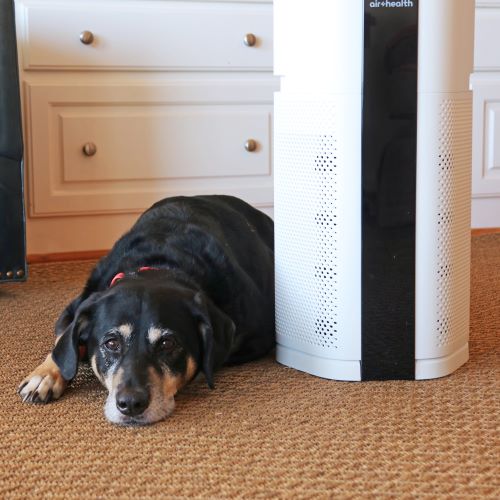We know that air quality contributes significantly to health. We also know that indoor air quality is typically 2 to 5 times worse than outdoor air quality, as many different indoor contaminants can cause allergic reactions and even aggravate certain medical conditions. The question is: How do we know if certain contaminants exist in our environment? Unfortunately, it’s not as easy as buying one kit that detects every type of contaminant or pollution in the air. Instead, we have to separate them into categories:
- Biological contaminants: Pollen, mold, pet dander, dust mites, and bacteria.
- Chemical pollutants: (Volatile Organic Compounds – VOCs). Acetone, formaldehyde, lead, terpenes, ethanol, radon, and others.
- Combustion pollutants: Carbon monoxide, nitrogen dioxide, tobacco smoke, and other gaseous substances.
Biological Pollutant Testing
When testing for biological substances like
mold, pollen, pet dander and dust mites, it’s best to have an idea of which
 pollutants might be causing issues. Many people have known allergies to pollen, so they may
decide to test their indoor air quality specifically for pollen. Or, if mold is
present, there might be a musty smell that gave it away.
pollutants might be causing issues. Many people have known allergies to pollen, so they may
decide to test their indoor air quality specifically for pollen. Or, if mold is
present, there might be a musty smell that gave it away.
In lieu of an indoor air quality monitor, many companies offer biological pollutant testing kits that measure pollutants by analyzing a dust or air sample from the home. Prices can vary widely depending on the number of contaminants you are testing.
For pollen, it’s a good idea to keep tabs on the pollen count outdoors by checking your local weather channel (you can use The Weather Channel online as well). The pollen count is measured by the number of pollen grains per cubic meter.
- For weeds, 1 to 9 is a low pollen count while above 50 is high.
- For grasses, below 4 is a low count while above 20 is high.
- For trees, 1 to 14 is a low count while above 90 is high.
Mold is another biological contaminant which can easily enter the home, causing allergic reactions and upper respiratory symptoms. Dr. Cerra, a Naturopathic Medical Doctor, who helps people who are struggling with complications from mold in their home describes it this way for her patients.
"Mold is a micro toxin and these micro toxins are what we call endocrine disrupting chemicals that when they come into your system, they are reeking havoc on your endocrine system, on your nervous system and on your muscular skeletal system." If you are concerned that mold may be causing you problems, see more from Dr. Cerra here.
Actual testing for mold is not always recommended, because you can often identify the areas where it’s present based on smell and sight. In this case, thoroughly clean the areas where mold has been identified in order to purify the air plus take steps to remove mold spores that may be circulating through your home.
Chemical Pollutant Testing
VOCs are organic compounds that easily become vapors or gasses. These could come from chemical products in the home like paint, cleaners, and wood preservatives. Some of our furniture and building materials may even give off VOCs.
Typical VOCs include formaldehyde, lead, and radon. Long-term exposure to many of these VOCs can cause kidney, liver and nervous system damage, as well as eye and respiratory tract irritation, headaches, dizziness, fatigue and other health issues.
Lead testing is recommended if your house was built before 1978 or is a near a freeway or roadway where leaded gasoline may have contaminated the soil. There are many EPA-recognized lead kits on the market that cost as little as $10.
Combustion Pollutant Testing
Combustion pollutants include environmental
tobacco smoke, or secondhand smoke, as well as carbon monoxide from gas
appliances and vehicles. The best way to reduce secondhand smoke is not
to permit smoking in the home or smoking by anyone who lives there.
 Testing for carbon monoxide is widely available.
Every home should have a carbon monoxide alarm. Also, consumers should have
their fireplaces and appliances inspected by a professional annually to
determine possible carbon monoxide emission.
Testing for carbon monoxide is widely available.
Every home should have a carbon monoxide alarm. Also, consumers should have
their fireplaces and appliances inspected by a professional annually to
determine possible carbon monoxide emission.
Air Quality Improvement
Regardless of what you find in your home in terms of pollen and other pollutants, the best way to improve your air quality is to invest in a high-quality air purifier that filters out VOCs, allergens, and irritants.
If you’re looking to reduce the VOCs in your home and maintain a healthy indoor environment for yourself and your
family, Air Health can help. A portable VOC air purifier like the Air Health SKYE Portable Air Filter can reduce the contaminants in your environment, which reduces the likelihood of getting sick, helps relieve asthma and allergy symptoms and keeps your home’s inhabitants in better general health.
The SKYE Portable Air Filter removes 99.97 percent of 0.3-micron particles, down to 0.1 micron. This energy-efficient, high-technology VOC air filter works in five steps: 1) prefiltering large particles like dirt, hair, and dust; 2) charcoal filter removes gases and odors; 3) true medical-grade HEPA filter removes allergens and irritants; 4) PRO-cell technology breaks down VOCs; and 5) Ultraviolet light reduces bacteria, mold, and fungi.
If you have any questions, please feel free to contact us.
 US Dollars
US Dollars
